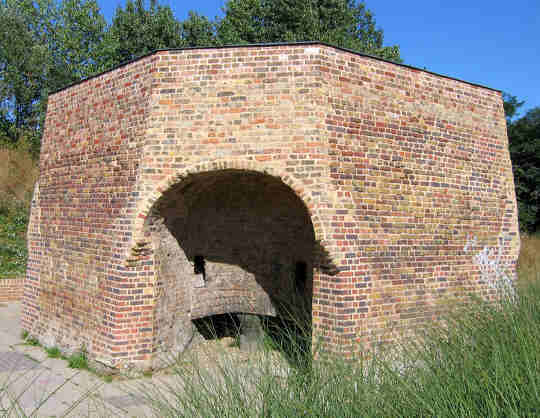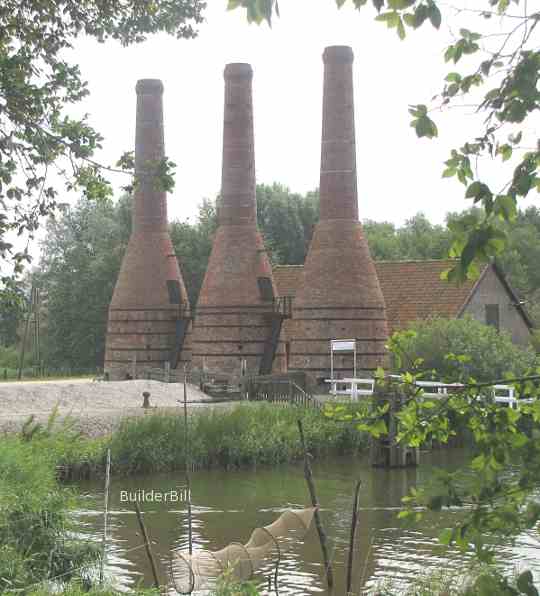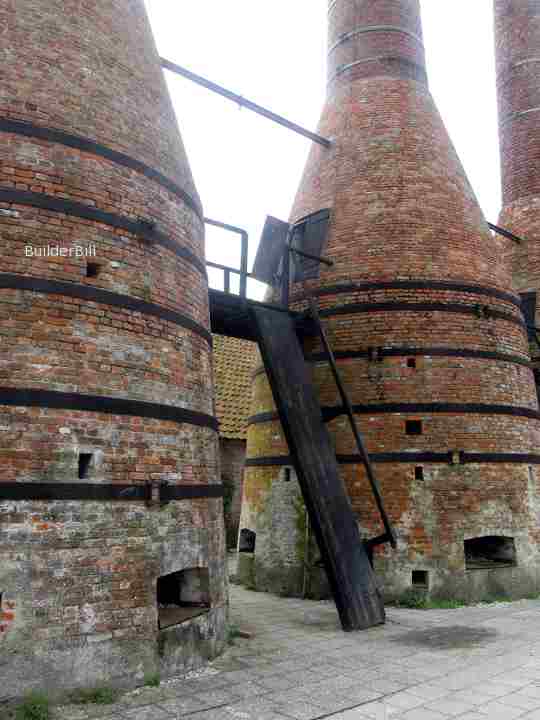 |
|||||||||
Graphical Construction Glossary >> Concrete and Concreting. >> >> Lime Kilns
The kiln design above is typical of kilns that were used from earliest times when it was first discovered how to make quick lime by heating crushed limestone rocks in a furnace or kiln, The technique was to load up the kiln with alternating layers of wood (later coal) and crushed limestone and then fire the kiln which would burn for seven or eight days. At the end of the firing the kiln was emptied and the ash residue was seived off. The quicklime was then placed in pits which were flooded to produce slaked lime or lime putty.
These kilns were in operation in the town of Akersloot in the Netherlands until the mid twentieth century when the use of cement based products made lime based mortar just about redundant. They were rebuilt at the Zuider Zee open air museum in 1978. They are of a more efficient design than the one in the top photo, working in a similar way to that of a blast furnace. The fuel originally was peat and then later coal and this was laid in the bottom of the kiln. When the fire was set seashells were then introduced into the chamber. After the firing process the lime would be tranferred to the shed and watered down to produce slaked lime.
If you didn't find exactly what you are looking for try this search tool that will search the site and the web. "What can be added to the happiness of a man who is in health, out of debt, and has a clear conscience? "When we build, let us think that we build for ever."John Ruskin 1819-1900 |
Hire Equipment  Furniture Fittings - Architectural Hardware - Electronic Locking Systems - Technical Hardware BuilderBill sponsorship Glossary Pages.Roof Glossary and Roofing Formwork Glossary and other tempory work. Hand Tools Glossary Power Tools Glossary Asbestos Glossary Woodwork Glossary Stair Glossary Concrete Glossary Masonry Glossary doors Glossary BuilderBill Books Building Maths  Stair Design  Asbestos Book |
||||||||
|
|
|||||||||
|
Please Note! The information on this site is offered as a guide only! When we are talking about areas where building regulations or safety regulations could exist,the information here could be wrong for your area. It could be out of date! Regulations breed faster than rabbits! You must check your own local conditions. Copyright © Bill Bradley 2007-2012. All rights reserved. |
|||||||||


